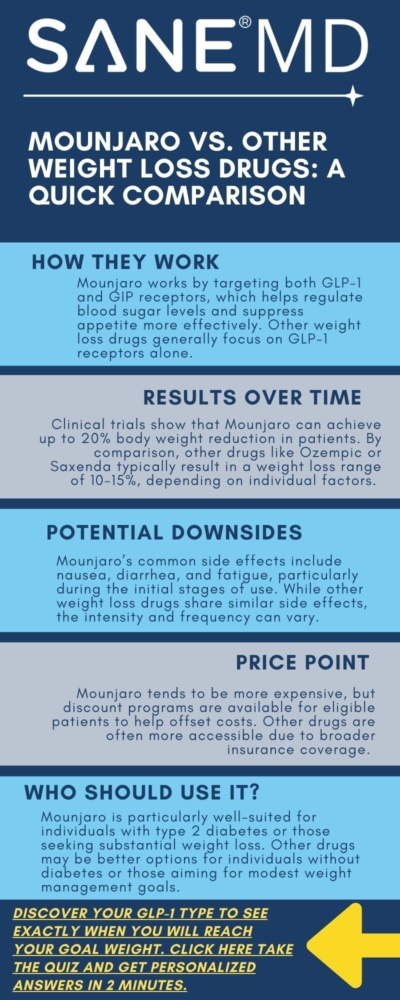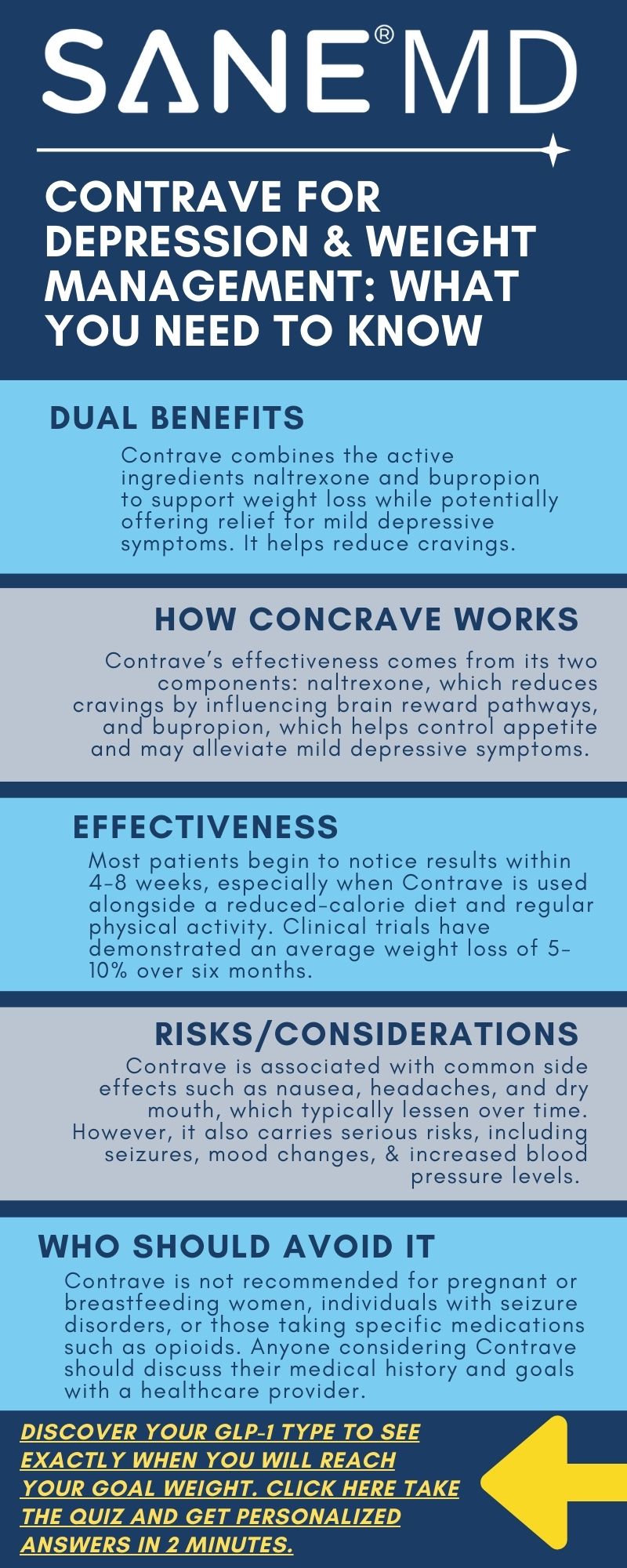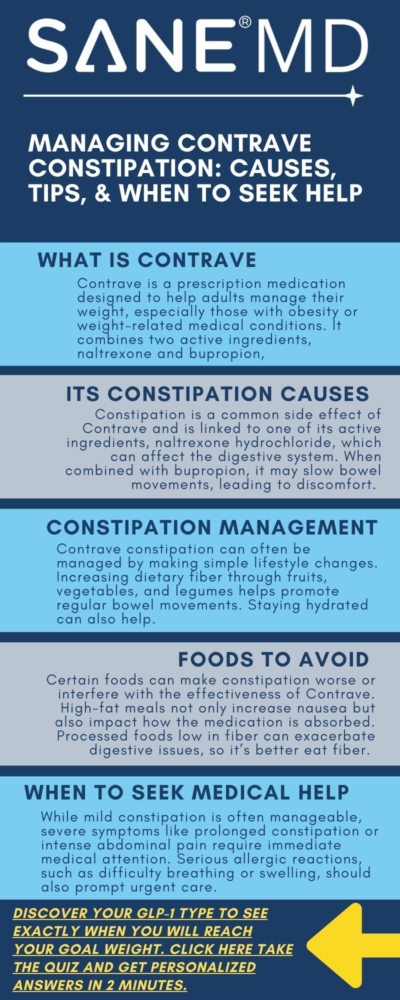Mounjaro vs. Other Weight Loss Drugs: Find Your Fit Quiz
The use of weight loss medications has gained significant attention in recent years as more people seek effective solutions to manage obesity and related health conditions. When considering Mounjaro vs other weight loss drugs, Mounjaro has emerged as a promising contender due to its dual-action mechanism, originally approved for type 2 diabetes but increasingly utilized for weight loss.
Additionally, some patients are exploring whether Mounjaro can be used before or after bariatric surgery. Our article, Mounjaro and Weight Loss Surgery: Can You Take Both?, examines its potential role in surgical weight loss plans.
This article provides a detailed comparison of Mounjaro with other popular weight loss drugs, such as Ozempic, Wegovy, and Contrave, to help readers understand their differences and make informed decisions. For those unsure about which medication aligns with their needs, taking the weight loss drug type quiz can offer valuable insights tailored to individual circumstances.
Key Takeaways
- Mounjaro’s Role in Weight Loss: Mounjaro targets multiple pathways in the brain and body, helping to regulate appetite, slow digestion, and support sustainable weight management, which can help individuals lose weight.
- Comparison Highlight: While Mounjaro and other drugs like Ozempic, Wegovy, and Contrave share similar goals of promoting weight loss, their mechanisms, effectiveness, and potential side effects differ.
- The weight loss drug type quiz is a useful tool to identify which medication may be the best fit for individual health needs and goals.
What Is Mounjaro?
Mounjaro (tirzepatide) is a prescription medication originally approved by the FDA for managing type 2 diabetes. It belongs to a class of drugs known as GLP-1 receptor agonists but stands out because it also acts on GIP (glucose-dependent insulinotropic polypeptide) receptors. Learn more about Mounjaro (tirzepatide) uses, including its role in diabetes management and weight loss, in our detailed guide.
This dual mechanism enhances its effectiveness in regulating blood sugar levels on par with and even better than some other diabetes medicines and addressing appetite control, making it unique among similar medications. However, like many prescription drugs, Mounjaro may interact with other medications, potentially impacting its effectiveness and safety. Understanding Mounjaro drug interactions is crucial for ensuring safe treatment, especially for those taking insulin, birth control, or blood pressure medications.
Although its primary indication is for diabetes, Mounjaro has shown significant promise for weight loss in clinical trials. Many healthcare providers now prescribe it off-label for this purpose, particularly for individuals struggling with obesity. Its effects on weight loss are attributed to its ability to:
- Reduce Appetite: Mounjaro influences hunger-regulating hormones in the brain, helping individuals feel full sooner and consume fewer calories.
- Slow Digestion: By slowing gastric emptying, the drug prolongs the sensation of fullness after eating.
- Regulate Blood Sugar Levels: Mounjaro enhances insulin sensitivity, contributing to overall metabolic improvements that support weight loss efforts. Check out our article on Mounjaro and Insulin Resistance to see how it can help regulate blood sugar levels.
To maximize its weight loss benefits, following a structured Mounjaro Diet can help optimize results and support long-term success.
In aiding weight loss, Mounjaro can also help lower high blood pressure.
However, Mounjaro is not suitable for everyone. Consulting a healthcare provider is essential to determine if it aligns with an individual’s health history and weight loss goals.
Certain medical conditions, such as a history of thyroid cancer or pancreatitis, may make it unsafe for use.
A thorough evaluation by a medical professional ensures that Mounjaro is prescribed appropriately, whether for diabetes management or weight loss.
Mounjaro vs Other Weight Loss Drugs: How Does Mounjaro Compare?
Mounjaro is one of several medications that have gained attention for aiding weight loss, but it differs significantly from other drugs in terms of its mechanism and target audience.
Below is a comparison of Mounjaro with some of the most popular weight loss medications currently available.
Ozempic (Semaglutide)
Ozempic, like Mounjaro, is a GLP-1 receptor agonist. Both medications help with weight loss by regulating hunger and slowing digestion.
However, Mounjaro’s additional action on GIP receptors distinguishes it from Ozempic, potentially amplifying its effects on appetite control and weight reduction.
- Effectiveness for Weight Loss: Studies suggest that Mounjaro may lead to greater weight loss than Ozempic due to its dual-action mechanism. However, individual responses vary.
- Similarities: Both medications help regulate blood sugar and reduce appetite, making them effective for people with obesity and type 2 diabetes.
- Differences: Mounjaro’s dual GLP-1 and GIP receptor activity may result in enhanced metabolic benefits, while Ozempic focuses solely on GLP-1 pathways.
Wegovy (Semaglutide)
Wegovy is essentially a higher-dose formulation of semaglutide (the active ingredient in Ozempic) and is FDA-approved specifically for weight loss.
- Dosage and Results: Wegovy’s higher doses often result in more pronounced weight loss compared to Ozempic. Clinical trials have shown weight reductions of up to 15% of body weight in some participants.
- Comparison with Mounjaro: While Wegovy is designed exclusively for weight loss, Mounjaro’s dual-action mechanism may provide comparable or better results for certain individuals.
Contrave (Bupropion-Naltrexone)
Contrave takes a different approach to weight loss, targeting hunger and cravings rather than hormonal pathways. It combines bupropion, an antidepressant, and naltrexone, typically used for addiction treatment, to reduce food-related impulses.
- Distinct Mechanism: Unlike Mounjaro, which works on gut-brain signaling, Contrave modifies reward pathways in the brain, making it especially useful for individuals who struggle with emotional eating.
- Suitability: Contrave may be a better option for people who cannot tolerate GLP-1-based medications due to side effects or contraindications.
The weight loss drug type quiz can help those unsure whether a behavioral-focused drug like Contrave might be a better fit.
Phentermine/Topiramate (Qsymia)
Qsymia combines phentermine, a stimulant that suppresses appetite, with topiramate, an anticonvulsant that promotes satiety.
- Mechanism: Unlike Mounjaro’s hormonal approach, Qsymia’s stimulant properties lead to rapid appetite suppression, often resulting in quicker initial weight loss.
- Key Demographics: Qsymia may be more suitable for individuals without a history of cardiovascular issues, as stimulants can increase heart rate and blood pressure.
Pros and Cons of Mounjaro vs Other Weight Loss Drugs
When evaluating weight loss drugs, it’s essential to consider both the advantages and drawbacks of each option.
Below, we outline the key pros and cons of Mounjaro and compare them with other popular medications like Ozempic, Wegovy, Contrave, and Qsymia.
Mounjaro Pros
- Dual Action on GLP-1 and GIP Pathways: Mounjaro stands out for its dual mechanism, which not only reduces appetite but also enhances metabolic functions through GIP receptor activation. This dual action can result in more substantial weight loss for some individuals.
- Positive Effects on Blood Sugar Regulation: Originally developed for managing type 2 diabetes, Mounjaro effectively regulates blood sugar levels, making it especially beneficial for individuals with obesity and concurrent diabetes.
- Greater Potential for Weight Loss: Clinical studies suggest that Mounjaro may lead to more significant weight loss compared to GLP-1-only medications like Ozempic.
Mounjaro Cons
- Side Effects: Is Mounjaro safe? There are no long-term safety studies on this drug, but commonly reported side effects include nausea, vomiting, and gastrointestinal discomfort, especially at the beginning of treatment. These side effects may lessen over time but can be challenging for some patients to tolerate. It’s important to note that Mounjaro injection site irritation can also occur if an injection is repeatedly given in the same location.
- High Cost and Limited Insurance Coverage: Mounjaro is not FDA-approved for weight loss, so insurance coverage for off-label use can be limited. This makes it less accessible for individuals without substantial financial resources.
Other Drugs Pros and Cons
- Ozempic/Wegovy:
- Pros: Proven effectiveness for weight loss, with FDA approval for Wegovy as a dedicated weight loss drug.
- Cons: Higher doses of semaglutide in Wegovy can increase the likelihood of side effects such as nausea and fatigue.
- Contrave:
- Pros: Particularly effective for reducing cravings and emotional eating, making it suitable for individuals with behavioral triggers.
- Cons: May not result in as much weight loss as GLP-1-based drugs and carries potential side effects like headaches and insomnia.
- Qsymia:
- Pros: Rapid initial weight loss due to the stimulant effects of phentermine.
- Cons: Stimulant-related side effects, such as increased heart rate and blood pressure, may limit its use for individuals with cardiovascular concerns.
Each medication offers unique benefits and limitations. The choice between Mounjaro and other drugs depends on individual factors, such as weight loss goals, tolerance for side effects, and affordability.
For a personalized assessment, consider taking the weight loss drug type quiz and consulting a healthcare provider.
How to Choose the Right Weight Loss Drug
Selecting the right weight loss medication requires a personalized approach, as no single drug works equally well for everyone. Factors such as medical history, weight loss goals, and tolerance to potential side effects should guide the decision-making process.
For instance, individuals with type 2 diabetes may benefit from medications like Mounjaro, which also regulates blood sugar, while those struggling with emotional eating might find Contrave more effective.
Healthcare providers play a critical role in evaluating these factors and recommending appropriate treatments. They can help identify potential risks, such as contraindications for certain drugs, and monitor progress to ensure the chosen medication delivers the desired results safely.
Cost and Accessibility
Cost is a significant consideration when choosing a weight loss drug. Mounjaro, though highly effective for weight loss, is often prescribed off-label, meaning insurance may not cover its use for this purpose. The monthly cost of Mounjaro can range from $800 to $1,000 without insurance, making affordability a concern for many patients.
Other medications, like Wegovy and Ozempic, also carry high costs, often exceeding $1,000 per month. Contrave and Qsymia tend to be less expensive, typically costing between $100 and $300 per month, depending on insurance coverage.
To help reduce costs, manufacturers of these medications often provide savings cards or discount programs. These programs can significantly lower out-of-pocket expenses, but availability and eligibility vary.
Patients should consult their healthcare providers or pharmacists to explore available financial assistance options and ensure they choose a medication that fits both their medical needs and budget.
How to Take Mounjaro
Taking Mounjaro correctly is essential to minimize side effects and achieve the best possible results. The medication is administered as a subcutaneous injection, typically once a week, and should be taken on the same day each week for consistency.
- Start with a Low Dose: To help the body adjust, patients usually begin with a low dose of 2.5 mg per week. This initial dose is not intended for weight loss but to reduce the likelihood of side effects such as nausea or vomiting.
- Gradual Dose Increases: After four weeks, the dosage is gradually increased based on tolerance and healthcare provider recommendations. Common dose increments include 5 mg, 7.5 mg, and up to a maximum of 15 mg per week.
- Administration Tips: Mounjaro can be injected into the abdomen, thigh, or upper arm. Rotate injection sites weekly to avoid irritation. The injection can be taken with or without food.
Patients should follow their healthcare provider’s instructions closely to ensure the dosage schedule aligns with their weight loss or diabetes management goals. Regular follow-ups with a healthcare provider can help monitor progress and make necessary adjustments to the dosage or treatment plan.
By starting with a lower dose and gradually increasing it, users can enhance their body’s ability to tolerate the medication while optimizing its benefits for weight loss or blood sugar regulation.
Always store Mounjaro as directed, typically in the refrigerator, and use it only as prescribed.
FAQs about Mounjaro and other Weight Loss Drugs
Below, we answer common questions to help you understand how Mounjaro compares to other weight loss drugs and what might be the best fit for you.
1. What is better than Mounjaro for weight loss?
Determining whether a drug is better than Mounjaro for weight loss depends on individual factors, such as weight loss goals, medical history, and side effect tolerance. Wegovy (semaglutide) is FDA-approved specifically for weight loss and has shown users achieving up to 15-20% body weight reduction.
However, Mounjaro’s dual-action mechanism (GLP-1 and GIP receptor activation) may result in greater weight loss for some individuals, even though it is not yet approved solely for weight loss. Check out our comparison of Mounjaro vs. other weight loss drugs to see how it stacks up. Consulting with a healthcare provider can help determine which medication is better suited for your specific needs.
2. What is the most effective weight loss drug ever?
Clinical studies indicate that Wegovy (semaglutide) is currently among the most effective weight loss drugs, with some patients experiencing up to a 20% reduction in body weight. Mounjaro (tirzepatide) shows comparable or even better results in clinical trials, but it is not FDA-approved specifically for weight loss.
The effectiveness of a drug also depends on adherence to lifestyle changes, such as a reduced-calorie diet and increased physical activity, which amplify the results of these medications.
3. Do you lose more weight on Ozempic or Mounjaro?
Clinical trials indicate that Mounjaro leads to greater weight loss compared to Ozempic (semaglutide). Mounjaro’s dual-action mechanism targets both GLP-1 and GIP receptors, whereas Ozempic only activates GLP-1 receptors.
On average, users taking Mounjaro lost more weight than those taking Ozempic, but individual results vary. Both medications work best when combined with diet and exercise.
4. Is Wegovy or Mounjaro better for weight loss?
Wegovy is FDA-approved specifically for weight loss, making it a straightforward choice for individuals seeking a dedicated weight loss medication. Mounjaro, while primarily approved for diabetes, has shown greater weight loss in some studies due to its dual-action mechanism.
Deciding between the two depends on individual health needs, cost considerations, and potential side effects, which should be discussed with a healthcare provider.
5. How do I know which weight loss drug is right for me?
Choosing the right weight loss drug requires evaluating your medical history, weight loss goals, and tolerance for side effects. A healthcare provider can assess these factors and recommend the best option.
Conclusion
Choosing the right weight loss medication is a highly individualized process, as each drug offers unique mechanisms, benefits, and potential drawbacks. Mounjaro stands out for its dual-action on GLP-1 and GIP receptors, providing significant weight loss and metabolic benefits for many users.
However, alternatives like Wegovy, Ozempic, Contrave, and Qsymia cater to specific needs and goals, whether it’s targeting emotional eating, reducing cravings, or managing blood sugar alongside weight loss.
While Mounjaro shows promise for weight loss, it may not be suitable for everyone due to side effects, costs, or medical contraindications. Consulting a healthcare provider is crucial to evaluate options and create a personalized treatment plan.
Ultimately, the journey to weight loss is about finding a sustainable solution that supports your overall health and well-being, and this article provides the insights you need to take the next step confidently.
Contrave For Depression: Dual Action?
Contrave, a new drug approved for chronic weight management, has garnered attention for its potential to support weight loss and address symptoms associated with certain mental health conditions. Combining naltrexone hydrochloride and bupropion hydrochloride, Contrave is a unique medication that aids in behavior modification, weight control, and potentially helps to treat depression in some individuals. This article explores the relationship between Contrave for depression, its effects on body weight, and its broader implications, including the increased risk of side effects associated with alcohol consumption and certain dietary choices.
Key Takeaways
- Dual Benefits for Weight Management and Mental Health
Contrave combines naltrexone hydrochloride and bupropion hydrochloride, offering weight loss support while potentially alleviating mild depressive symptoms in some individuals. - Effectiveness Requires a Structured Plan
Contrave works best when combined with a reduced-calorie diet and regular physical activity, helping compatible patients achieve sustainable weight loss and behavioral changes. - Safety and Individual Suitability Are Crucial
While Contrave is effective for many, it carries risks such as mood-related side effects and contraindications for certain medical conditions. A healthcare provider’s guidance is essential for safe use.
Who is Contrave For?
Contrave is a prescription medication that combines two active ingredients, naltrexone hydrochloride and bupropion hydrochloride, to aid in weight loss and chronic weight management in overweight and obese adults. The medication is designed to work in two ways to help reduce hunger and control cravings, making it a valuable treatment option for certain individuals struggling with obesity-related risk factors.
Contrave is indicated for use in overweight and obese adults with a body mass index (BMI) of 27 kg/m² or greater, or in obese adults with a BMI of 30 kg/m² or greater, in conjunction with a reduced-calorie diet and increased physical activity.
How Does Contrave Work?
Contrave’s mechanism involves its two active components:
- Naltrexone Hydrochloride: An opioid antagonist, which may influence brain pathways linked to cravings and reward.
- Bupropion Hydrochloride: A norepinephrine reuptake inhibitor commonly used to treat depression and seasonal affective disorder.
Together, these components help to decrease appetite, making it easier for overweight and obese adults to follow a reduced-calorie diet and lose weight effectively.
How Contrave Works: A Breakdown of Its Active Components
| Component | Function | Role in Contrave |
|---|---|---|
| Naltrexone Hydrochloride | Opioid antagonist that may influence brain pathways linked to cravings and reward | Helps reduce cravings and improve control over eating behaviors |
| Bupropion Hydrochloride | Norepinephrine reuptake inhibitor commonly used to treat depression and seasonal affective disorder | Reduces appetite and may offer mild benefits for depressive symptoms in some users |
Contrave and Depression
While Contrave is primarily approved for weight management, its inclusion of bupropion hydrochloride suggests potential benefits for individuals with mental health conditions such as seasonal affective disorder.
However, Contrave is not specifically marketed as a treatment for depression. Patients considering this treatment option for dual purposes should consult a healthcare provider.
Contrave for Depression: Understanding the Role of Bupropion
Contrave contains bupropion, a component that may provide some benefit in alleviating mild depressive symptoms in certain individuals. Bupropion is an antidepressant that affects brain chemicals linked to mood regulation, such as dopamine and norepinephrine. While this action might offer incidental mood-enhancing effects for some users of Contrave, it is important to note that the medication is not approved or designed to treat major depressive disorder or other clinical mood disorders.
If you are experiencing persistent sadness, loss of interest in daily activities, or other signs of depression, it’s essential to discuss these symptoms with your healthcare provider. They can evaluate your condition and determine whether a dedicated antidepressant or other therapeutic interventions are necessary. Remember, proper treatment of mental health conditions is vital for overall well-being and should not be overlooked.
Benefits of Contrave for Chronic Weight Management
Contrave supports chronic weight management for certain overweight and obese patients when combined with diet and exercise. In clinical trials such as COR I and COR II, patients experienced notable improvements in body weight and waist circumference compared to the placebo-controlled groups.
Contrave offers several key benefits, including aiding individuals in achieving weight loss as part of a structured program. It also helps improve markers such as glycemic parameters, reducing obesity-related risk factors. Additionally, the medication promotes behavior modification, supporting sustainable lifestyle changes for long-term weight management success.
Clinical Trials Supporting Contrave’s Effectiveness
Several clinical trials have validated Contrave’s efficacy for weight loss. Studies such as COR I, COR II, and the COR-BMOD trial have shown:
- Significant reductions in body weight.
- Improvements in waist circumference and other health conditions associated with obesity.
Safety and Tolerability
Contrave has been administered to over 3,475 patients with more than 2,300 patient-years of exposure, demonstrating a favorable safety and tolerability profile. The most common side effects experienced during clinical trials include nausea, constipation, and headache.
However, Contrave may also cause serious side effects, such as suicidal thoughts or actions, seizures, and increased blood pressure. It is essential for patients to discuss any changes in mood or other side effects with their healthcare provider.
Additionally, Contrave should not be taken by individuals with a history of seizures, uncontrolled high blood pressure, or certain mental health conditions.
Potential Side Effects of Contrave
Like most medications, Contrave may cause side effects ranging from mild to severe. Common symptoms include:
- Nausea
- Dry mouth
- Trouble sleeping
- Headaches
Severe side effects requiring medical attention include:
- High blood pressure
- Seizure disorder
- Suicidal thoughts
- Serious allergic reaction
Special Considerations
When prescribing Contrave, healthcare providers should consider several special factors. Patients with a history of seizure disorder or those who have suddenly stopped taking certain medications should not take Contrave.
Additionally, individuals with anorexia nervosa or bulimia, or those who drink a lot of alcohol and suddenly stop, should not take Contrave. Pregnant or breastfeeding women should also exercise caution when taking Contrave, as weight loss during pregnancy may cause fetal harm, and the medication passes into breast milk.
Furthermore, patients with liver damage or those taking certain medications, such as monoamine oxidase inhibitors (MAOIs), should not take Contrave.
It is crucial for patients to inform their healthcare provider about all their health conditions and medications before starting Contrave.
What to Avoid While Taking Contrave
To minimize risks and enhance effectiveness, avoid:
- Drinking alcohol, which can increase the risk of side effects like nausea and seizures. Alcohol consumption is associated with an increased risk of adverse effects.
- Consuming high-fat meals, which may heighten nausea and increase the risk of seizures.
- Taking opioids or opioid-containing medications.
Who Should Not Take Contrave?
Contrave is not recommended for individuals with:
- Uncontrolled high blood pressure
- A history of seizure disorders
- Current opioid use or withdrawal
- Pregnancy or breastfeeding, due to the potential transfer through breast milk
Contrave and Mood Changes
Does Contrave Change Your Mood?
Some individuals may notice mood improvements due to the bupropion hydrochloride in Contrave. However, mood changes should be monitored, as suicidal thoughts or behaviors may occur in some age groups, particularly young adults.
Does Contrave Increase Serotonin?
Contrave primarily affects norepinephrine and dopamine pathways rather than serotonin. It does not significantly increase serotonin levels.
How Does Contrave Compare to Other Treatments?
Is Contrave the Same as Wellbutrin?
While both Contrave and Wellbutrin contain bupropion hydrochloride, their purposes differ. Contrave is specifically formulated for chronic weight management, whereas Wellbutrin is prescribed for depression and smoking cessation.
Frequently Asked Questions About Contrave
If you’re considering Contrave for weight loss, it’s natural to have questions about its effectiveness, safety, and what to expect during treatment.
This FAQ section provides detailed answers to common inquiries about Contrave, helping you make an informed decision. Whether you’re curious about the timeframe for results, average weight loss, or potential drawbacks, we’ve got you covered.
1. How Long Does It Take to See Results?
Contrave typically starts to show noticeable effects within 4-8 weeks. Many patients report reduced appetite and gradual weight loss during this period, particularly when combined with a reduced-calorie diet and regular physical activity.
Individual experiences may vary, so it’s essential to stay consistent with your prescribed regimen and maintain open communication with your healthcare provider.
2. What Is the Average Weight Loss on Contrave?
In clinical trials, participants using Contrave achieved an average weight loss of 5-10% of their initial body weight over six months. This result was significantly higher compared to those in the placebo group.
The effectiveness of Contrave often depends on adherence to lifestyle changes, including dietary adjustments and increased physical activity, as these factors enhance the drug’s benefits.
3. What Are the Downsides of Contrave?
Contrave can be effective for weight management, but it’s not without risks. Common side effects include nausea, headache, constipation, and dizziness, which often lessen as your body adjusts to the medication. More serious concerns include potential interactions with other medications and mood-related side effects such as anxiety or depression.
Contrave carries a boxed warning for suicidal thoughts and behaviors, so regular follow-ups with your healthcare provider are essential to monitor your mental and physical health during treatment.
4. Can Contrave Be Taken with Other Medications?
Contrave may interact with certain medications, including antidepressants, antipsychotics, opioids, and blood pressure medications.
These interactions could affect its safety and effectiveness, so it’s crucial to inform your healthcare provider about all medications and supplements you’re taking. They can assess potential risks and adjust your treatment plan accordingly.
5. Is Contrave Safe for Everyone?
Contrave is not suitable for everyone. It is contraindicated in individuals with uncontrolled hypertension, seizure disorders, eating disorders, or those dependent on opioid medications. Pregnant or breastfeeding individuals should also avoid using Contrave.
Always discuss your medical history and health conditions with your doctor to determine if Contrave is a safe and appropriate choice for you.
6. Does Contrave Require a Specific Diet or Exercise Plan?
While Contrave is effective on its own, its benefits are significantly enhanced when paired with a healthy lifestyle. Patients are encouraged to follow a reduced-calorie diet and engage in regular physical activity to maximize results.
Your healthcare provider may recommend a tailored plan to help you achieve your weight loss goals while using Contrave.
7. Can Contrave Be Used Long-Term?
Contrave is approved for long-term use in weight management, provided it remains effective and well-tolerated. Patients who achieve significant weight loss and maintain their progress often continue using the medication under the guidance of their healthcare provider.
Regular check-ins are essential to evaluate the ongoing benefits and address any concerns.
By addressing these frequently asked questions, we aim to provide clarity on what you can expect from Contrave. Always consult with your healthcare provider for personalized advice and support during your weight loss journey.
Conclusion
Contrave’s unique combination of naltrexone hydrochloride and bupropion hydrochloride offers a promising option for overweight and obese adults seeking comprehensive weight management.
While it may provide secondary benefits for mild depressive symptoms, patients should consider it primarily as a weight loss aid and consult their healthcare provider for personalized advice.
For more information, visit the FDA’s page on Contrave (opens in a new tab) or learn more from trusted sources like Mayo Clinic
Contrave Constipation? What on Earth is Happening
Contrave is a prescription medication designed for weight management in a subset of adults struggling with obesity or a weight-related medical condition. Among its potential side effects, Contrave constipation is a common issue that some users experience. Indeed, there is an increased risk of side effects like constipation when taking Contrave, especially when combined with alcohol or high-fat meals.
This article explores the relationship between Contrave constipation, its causes, and strategies for managing this side effect.
Key Takeaways
- Common Side Effects and Precautions: Contrave is a weight management medication combining naltrexone and bupropion. Common side effects include constipation, nausea, and headaches, while serious risks include suicidal thoughts (boxed warning) and allergic reactions. Patients with certain medical conditions, such as eating disorders or a history of substance abuse, should avoid Contrave.
- Managing Constipation: Constipation caused by Contrave is often temporary and can be alleviated by increasing dietary fiber, staying hydrated, exercising, or using over-the-counter remedies like Miralax under medical supervision.
- Lifestyle Recommendations for Effectiveness: To maximize Contrave’s benefits, follow a reduced-calorie diet rich in fiber, engage in regular physical activity, avoid high-fat meals, and maintain good sleep hygiene. Always consult a healthcare provider for personalized guidance and to manage side effects.
What is Contrave and How Does it Work?
Contrave is a prescription medication used for weight loss and weight management in certain adults. It combines two active drugs: naltrexone and bupropion. Taken orally, Contrave must be swallowed whole. While the exact mechanism of action is not fully understood, it is believed to target areas of the brain, such as the hypothalamus and dopamine pathways. The hypothalamus is a gland that helps control appetite, while dopamine is a chemical responsible for pleasure and reward.
By potentially increasing dopamine levels and acting on the hypothalamus, Contrave may help decrease appetite in compatible individuals, aiding in weight loss efforts.
Does Naltrexone Make You Constipated?
One of the active ingredients in Contrave, naltrexone hydrochloride, can influence the digestive system by interacting with opioid receptors. While naltrexone is primarily an opioid antagonist designed to block the effects of opioids on these receptors, it may inadvertently impact normal gut motility. The gut’s opioid receptors play a role in regulating peristalsis, the wave-like contractions that move food through the digestive system. By altering this regulation, naltrexone can slow intestinal movement, leading to constipation in some individuals.
Additionally, when combined with bupropion hydrochloride, which has its own effects on neurotransmitters such as dopamine and norepinephrine, this interaction can further influence gut-brain signaling and exacerbate gastrointestinal symptoms. Together, these ingredients may reduce gut motility and fluid secretion, increasing the likelihood of constipation, especially in individuals already prone to digestive issues.
Additionally, naltrexone can cause a serious allergic reaction, and immediate medical attention is necessary if such reactions occur.
What Is the Most Common Side Effect of Contrave?
While side effects of Contrave vary among individuals, some of the most common include:
- Nausea
- Constipation
- Dry mouth
- Trouble sleeping
- Headaches
- Individuals with bipolar disorder should be cautious as the medication may trigger manic episodes
Boxed Warning: Risk of Suicidal Thoughts and Behaviors
Contrave carries a boxed warning due to the risk of suicidal thoughts and behaviors. Antidepressants like bupropion, one of the components of Contrave, can increase the risk of suicidal thoughts and behaviors in individuals with depression or certain mental health conditions. This risk is particularly noted in children, adolescents, and adults up to 24 years of age.
If you experience any changes in mood or suicidal thoughts while taking Contrave, it is crucial to report them to your healthcare provider immediately.
Precautions and Contraindications
Certain individuals should not take Contrave due to the potential for serious harm. Those with a history of suicidal thoughts or behaviors, substance abuse, or liver disease should avoid this medication. Additionally, Contrave should not be taken during pregnancy or breastfeeding, as it may cause fetal harm or pass into breast milk, potentially harming the child.
If you have any medical conditions such as high blood pressure, heart disease, or mental health conditions, inform your healthcare provider before starting Contrave. It is also essential to disclose all medications you are currently taking, including prescription drugs, over-the-counter medications, vitamins, and supplements, as they may interact with Contrave.
Does Contrave Constipation Go Away?
For most patients, constipation associated with Contrave is a temporary issue as the body adjusts to the medication. If symptoms persist, consult your healthcare provider for guidance.
Can You Take Miralax with Contrave?
Yes, over-the-counter laxatives like Miralax may help alleviate constipation while taking Contrave.
However, always tell your healthcare provider before adding any new medication, including laxatives, to avoid potential drug interactions.
Foods to Avoid While Taking Contrave
Certain foods may exacerbate constipation or interfere with Contrave’s effectiveness. Avoid:
- High-fat meals: These can increase nausea and affect how the medication is absorbed.
- Processed foods low in fiber.
Instead, focus on a healthy diet rich in:
- Fiber (e.g., fruits, vegetables, legumes).
- Hydrating foods to maintain regular bowel movements.
Additionally, individuals with eating disorders such as anorexia nervosa or bulimia should not take Contrave due to potential health risks.
How to Relieve Constipation While Taking Contrave
If you experience constipation while taking Contrave, consider these strategies:
- Increase fiber intake: Incorporate more fruits, vegetables, and legumes into your diet.
- Stay hydrated: Drink plenty of water to help move food through your digestive system.
- Physical activity: Regular exercise can promote healthy digestion.
- Over-the-counter remedies: Options like Miralax or fiber supplements may help, but consult your healthcare provider first.
How to Relieve Constipation While Taking Contrave
| Strategy | Details | Tips for Implementation |
|---|---|---|
| Increase Fiber Intake | Add more fruits, vegetables, and legumes to your diet. | Start with small portions of high-fiber foods to avoid bloating and gradually increase intake. |
| Stay Hydrated | Drinking plenty of water helps soften stool and maintain regular bowel movements. | Aim for 8–10 glasses of water daily; include hydrating foods like cucumber and watermelon. |
| Physical Activity | Exercise promotes healthy digestion and reduces constipation symptoms. | Include daily walks, yoga, or light cardio to support digestion and overall well-being. |
| Over-the-Counter Remedies | Products like Miralax or fiber supplements can provide short-term relief. | Always consult your healthcare provider before adding any laxatives or supplements. |
Managing Other Side Effects of Contrave
In addition to constipation, Contrave may cause other side effects, such as:
- High blood pressure: Regularly monitor your blood pressure while on Contrave.
- Withdrawal symptoms: Discuss any history of opioid use with your doctor before starting Contrave.
- Suicidal thoughts: If you experience mood changes or mental health conditions worsen, contact your healthcare provider immediately.
There is an increased risk of side effects when Contrave is combined with alcohol or high-fat meals.
When to Seek Medical Attention
If you experience severe or persistent side effects, such as:
- Life-threatening allergic reactions (e.g., difficulty breathing, swelling).
- Severe constipation or abdominal pain.
- Worsening mood or suicidal thoughts.
Contact your healthcare provider or call your local emergency number immediately.
Clinical Studies on Contrave’s Side Effects
Clinical trials for Contrave have demonstrated its efficacy in supporting weight loss, but they also identified constipation as a common side effect.
These studies emphasize the importance of pairing Contrave with lifestyle changes, such as a healthy diet and exercise, to maximize results and minimize side effects.
Tips to Maximize Weight Loss on Contrave
While Contrave can be an effective tool for weight management, its success largely depends on how well it is integrated with healthy lifestyle habits. By adopting a holistic approach that includes mindful eating, regular physical activity, and other supportive practices, you can enhance the medication’s effectiveness while minimizing potential side effects.
Below are practical tips to help you get the most out of your weight loss journey with Contrave.
1. Follow a Reduced-Calorie Diet
To achieve the best results with Contrave, focus on a reduced-calorie diet that emphasizes balanced, nutrient-rich meals. Incorporate lean proteins (e.g., chicken, fish, tofu), lentils, and a variety of colorful fruits and vegetables to ensure you get essential vitamins and minerals.
Avoid sugary snacks, processed foods, and empty-calorie beverages like soda. Use tools like meal planning apps or consult a dietitian to create a meal plan that fits your caloric needs and dietary preferences.
2. Stay Active
Regular physical activity not only aids in weight loss but also improves digestion and overall well-being. Aim for at least 150 minutes of moderate-intensity aerobic exercise per week, such as brisk walking, cycling, or swimming. Incorporate strength training exercises twice a week to build muscle and boost metabolism.
For beginners, start small with daily 10–15-minute walks, gradually increasing intensity and duration as your fitness level improves.
3. Avoid High-Fat Meals
High-fat meals can exacerbate nausea and interfere with Contrave’s absorption, reducing its effectiveness. Limit your intake of fried foods, fatty meats, and creamy sauces. Instead, choose cooking methods like grilling, steaming, or baking, and use healthy fats in moderation, such as olive oil, avocado, or nuts.
When dining out, opt for lower-fat options like grilled proteins or salads with dressing on the side.
4. Good Sleep Hygiene
Adequate rest is critical for weight management and overall health. Poor sleep can disrupt hunger-regulating hormones like ghrelin and leptin, leading to increased cravings and overeating. Aim for 7–9 hours of quality sleep each night by establishing a consistent bedtime routine.
Avoid screens for at least an hour before bed, create a relaxing environment with dim lighting and comfortable bedding, and limit caffeine intake in the afternoon and evening. If you struggle with sleep, consider relaxation techniques like meditation or deep-breathing exercises.
By implementing these strategies, you can enhance the effectiveness of Contrave while supporting a sustainable and healthy weight loss journey.
Conclusion
Contrave constipation is a manageable side effect for many patients. By following dietary recommendations, staying active, and consulting your healthcare provider, you can minimize discomfort while maximizing the medication’s benefits.
If you have concerns about taking Contrave, discuss them with a healthcare professional to ensure it’s the right choice for your weight management journey.
For more information, visit the FDA’s official page on Contrave (opens in a new tab) or consult resources like the Mayo Clinic




















